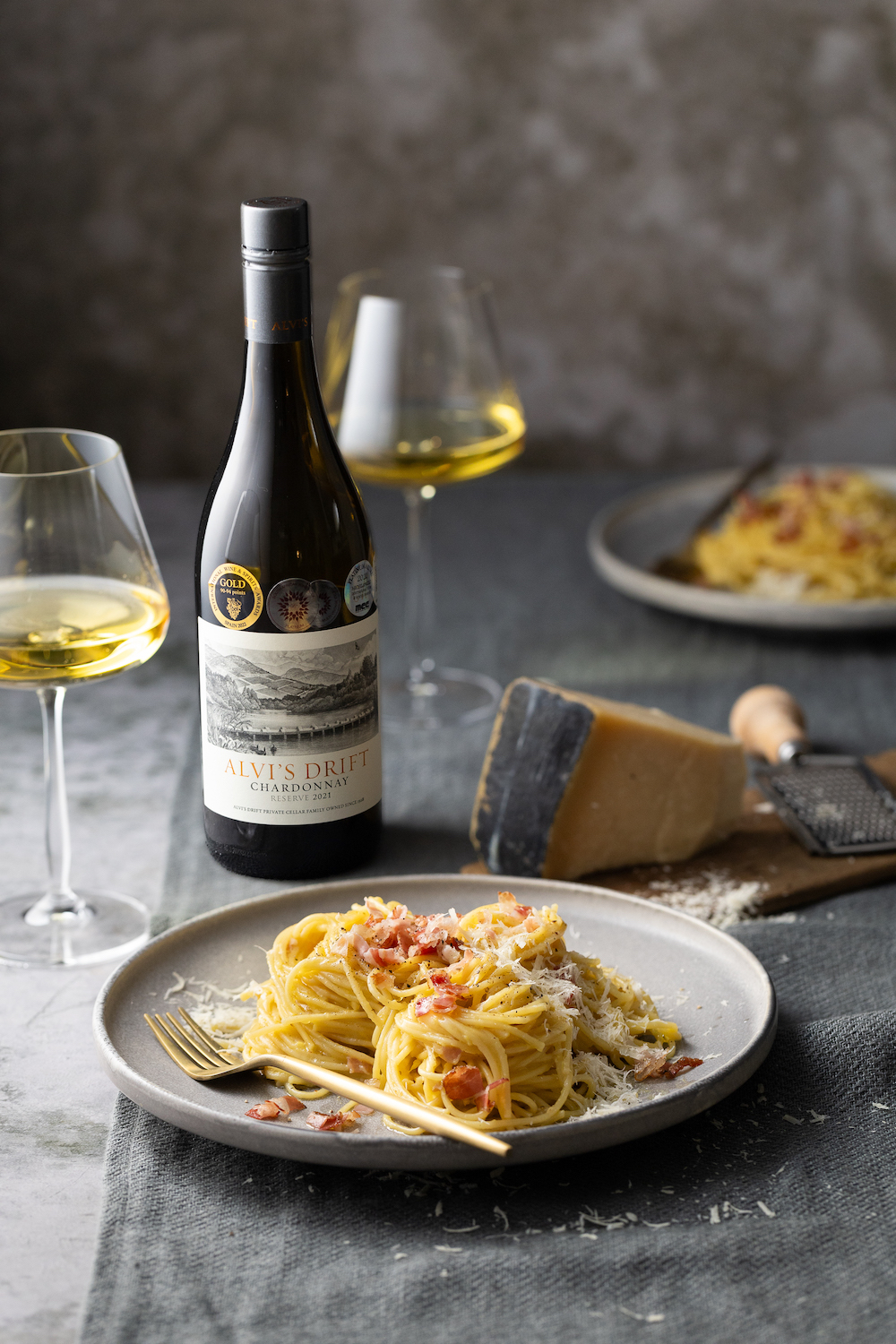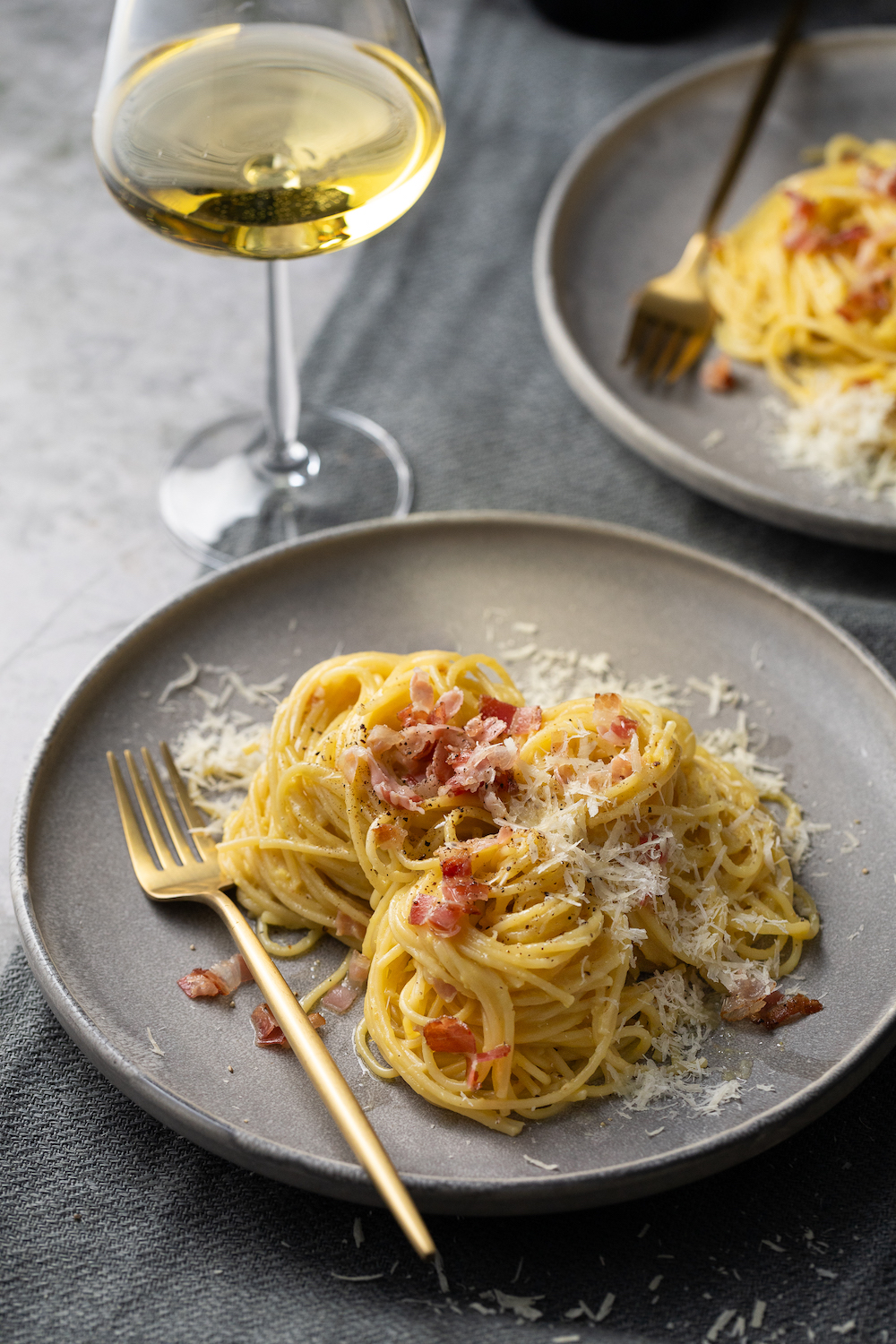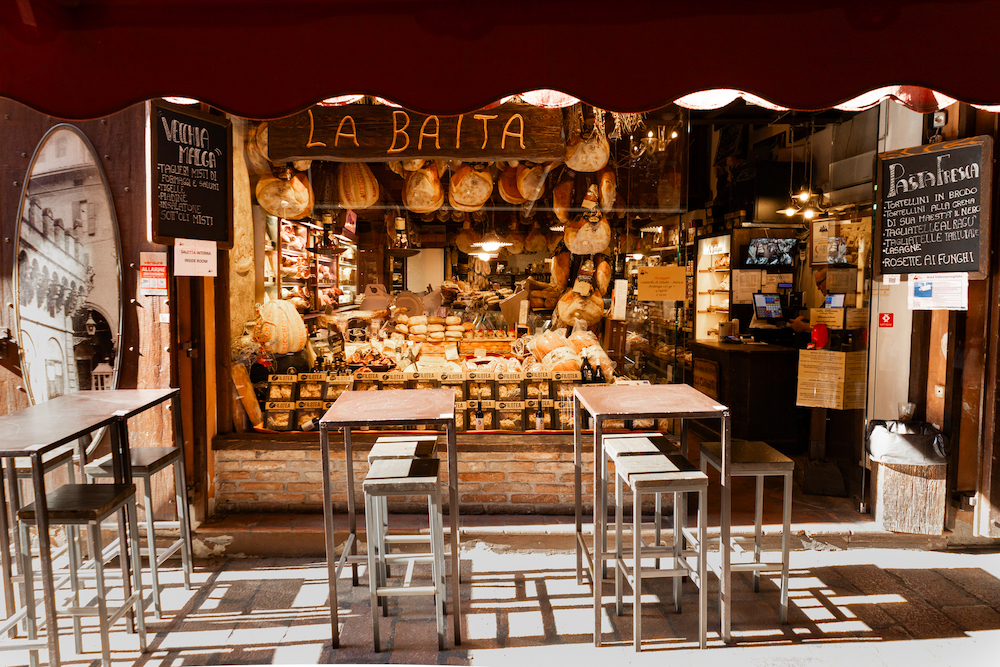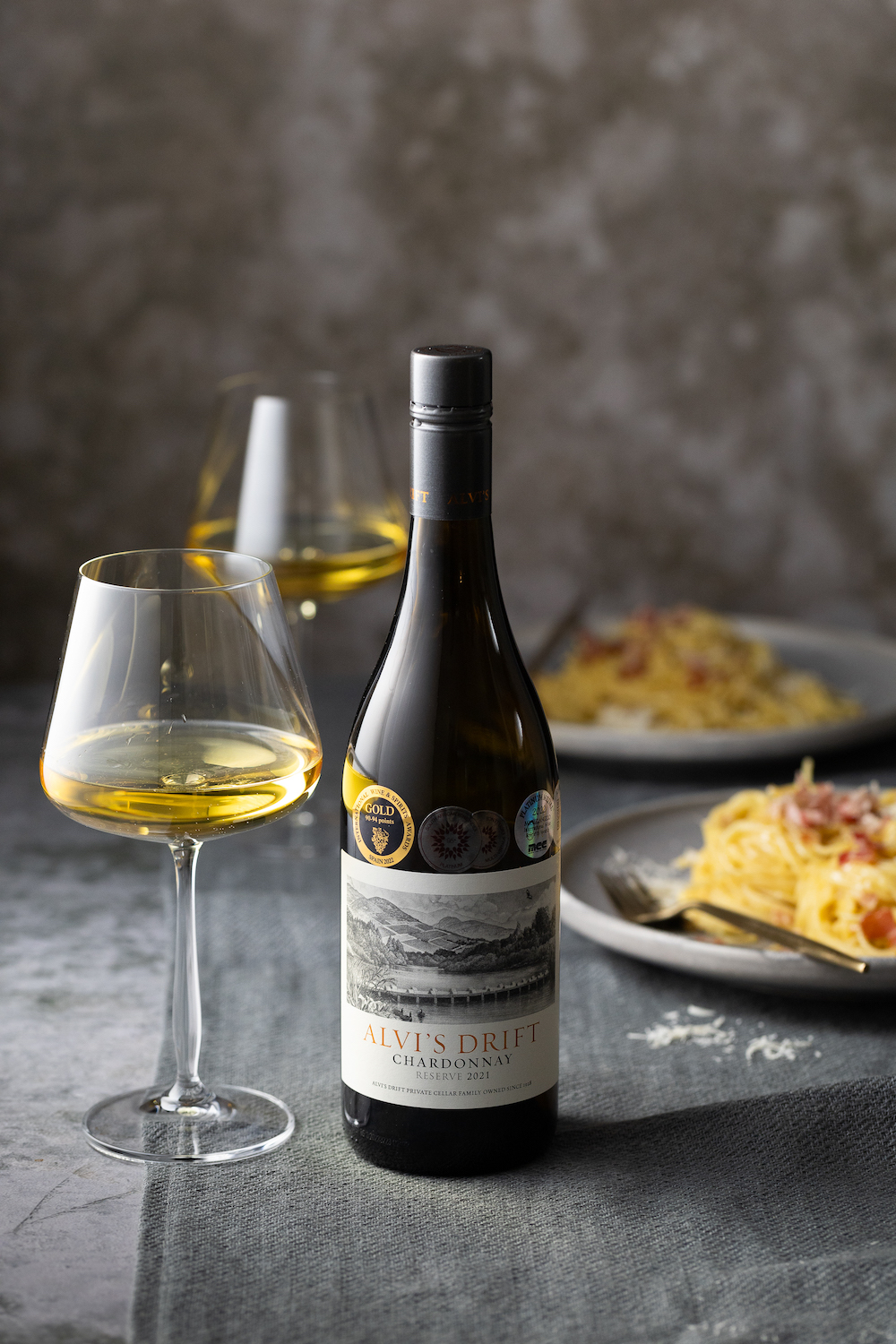
After spending some time in Italy during August this year, I’ve been avidly trying my hand at making the best classic spaghetti carbonara. In Italy, it has become quite a benchmark dish and every trattoria has one on their menu. This deceptively simple dish of pork, eggs and cheese is incredibly delicious and only take a few minutes to put together. The success of it, however, lies in selecting the finest ingredients, keeping it simple, and having spot-on timing when it comes to technique.

Traditionally made with cubed guanciale – Italian cured pork cheek with a high fatty content – the fat is rendered in a pan and helps to thicken the sauce. By lack of access to guanciale in South Africa, I’ve selected South African pancetta, already sliced into thin strips, chopped into smaller pieces. Because the fat content is slightly less than guanciale, I’ve added a little butter to the olive oil while frying it. With regards to eggs, I always use free range extra large, and you’ll get varying degrees of yellow colour depending on what the hens have been grazing. Some prefer a richer sauce by only using yolks, but I like whole eggs. For the cheese, I brought back a 30 month matured Il Nero, an award winning cow’s milk hard cheese similar to Parmigiano Reggiano, absolutely delicious. Some purists swear by pecorino cheese, but I prefer an aged parmigiano, or in this case, the Il Nero.

In terms of technique, the cured pork is fried in a pan until the fat renders, then the freshly cooked pasta is added to the pan off the heat (the pan should have cooled for a few minutes), reserving some of the pasta water. Toss the pasta in the fatty pork, then add ⅓ cup of pasta water along with 3 whisked eggs and some grated cheese, tossing for a few seconds until the pasta is just coated in a thin, silky layer of sauce – no cream added. Dish up and serve at once, because freshly prepared carbonara waits for no one. To make the egg part easier, I whisk the eggs with the cheese, seasoning it well with salt & pepper, before stirring into the pasta. The residual heat of the freshly cooked pasta and pasta water will thicken and gently cook the eggs. If the pan is too hot, it will scramble. If the pan and pasta is cold, the sauce might be slippery. But if you get it right, it is simple perfection.

Here is my best spaghetti carbonara recipe, served with a glass of Alvi’s Drift finest Reserve Chardonnay 2021 – a 100% barrel fermented wine with beautiful complexity, elegantly balanced, dense mouthfeel and refreshing acidity.
Ingredients: (serves 3-4)
salted water for cooking
15 ml olive oil
100 g pancetta, chopped
15-30 ml butter
3 XL eggs (plus an extra yolk, if you want a richer result)
1 cup aged parmesan cheese, finely grated, plus extra for serving
salt & pepper, to taste
400 g spaghetti
Method:
Place the water in a large pot over high heat. While it is heating, prepare the pancetta. In a wide pan, heat the oil and fry the pancetta over medium heat for 2 minutes, then add the butter and continue to fry to another 2-3 minutes until it is crispy and the butter starts to turn a light golden brown. Remove from the heat (reserve a few fried pieces for topping). In a small bowl, use a fork to whisk the eggs, then add half the cheese, season generously with salt & pepper, and whisk again. Set aside.
When the pasta water starts boiling, add the spaghetti and cook for exactly 7 minutes in rapidly boiling water, stirring with tongs so it doesn’t stick together. Reserve half a cup of pasta water, then use tongs to transfer the spaghetti directly into the pancetta pan. Toss with the pancetta, then add ⅓ cup of pasta water, the prepared egg mixture and toss together gently until the sauce just coats the pasta. Plate immediately, top with more cheese and serve at once.
(This recipe was created in proud collaboration with Alvi’s Drift Wines.)
